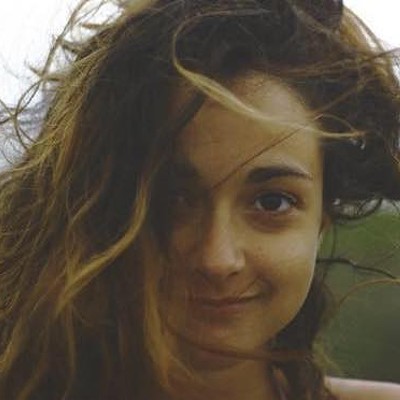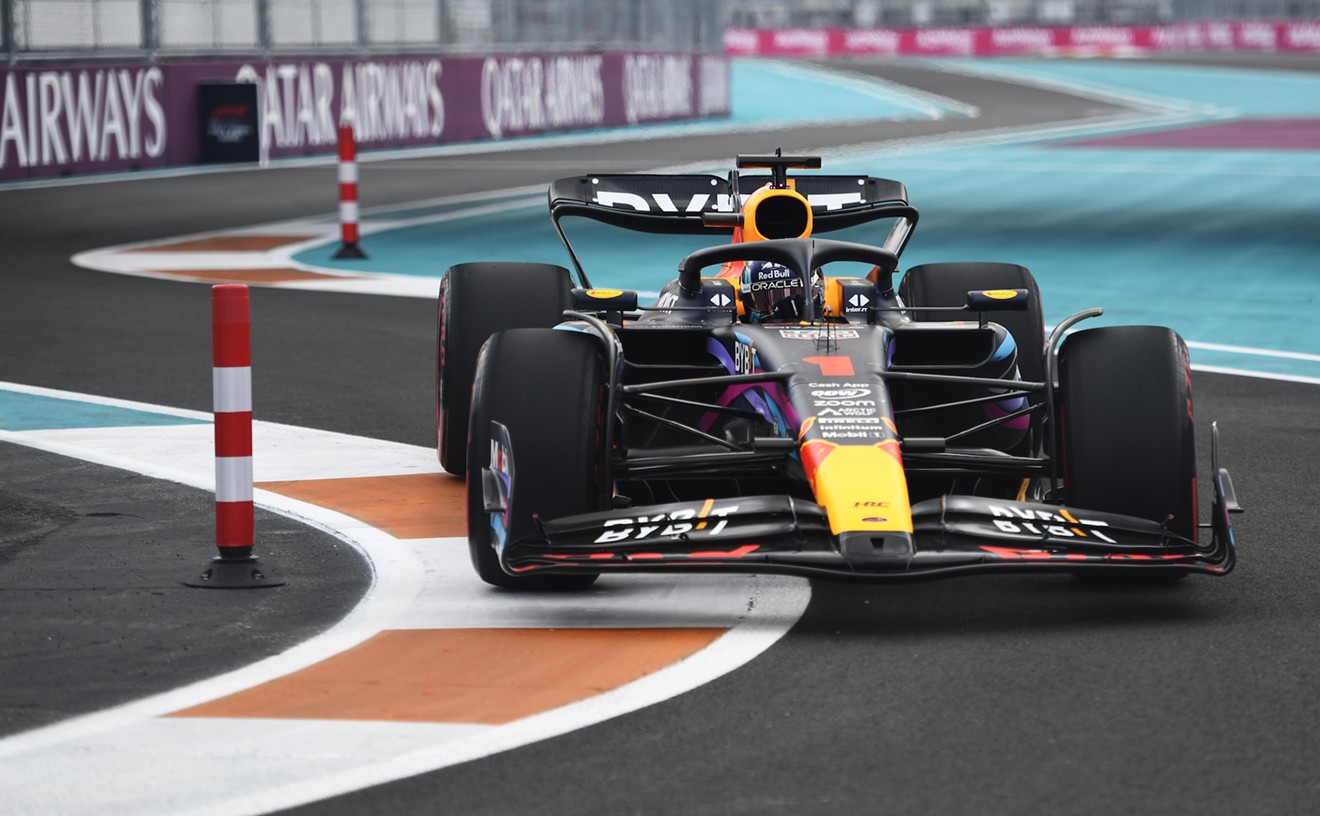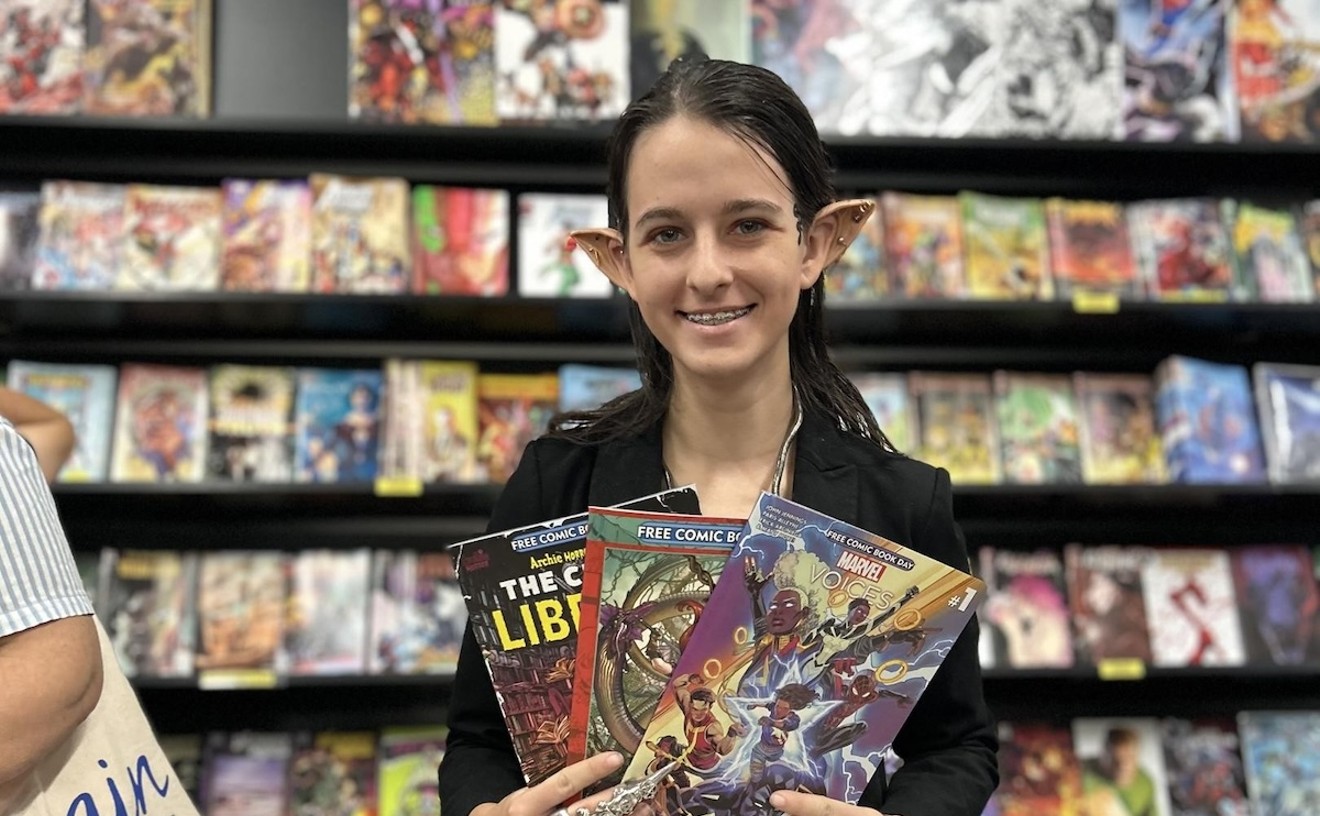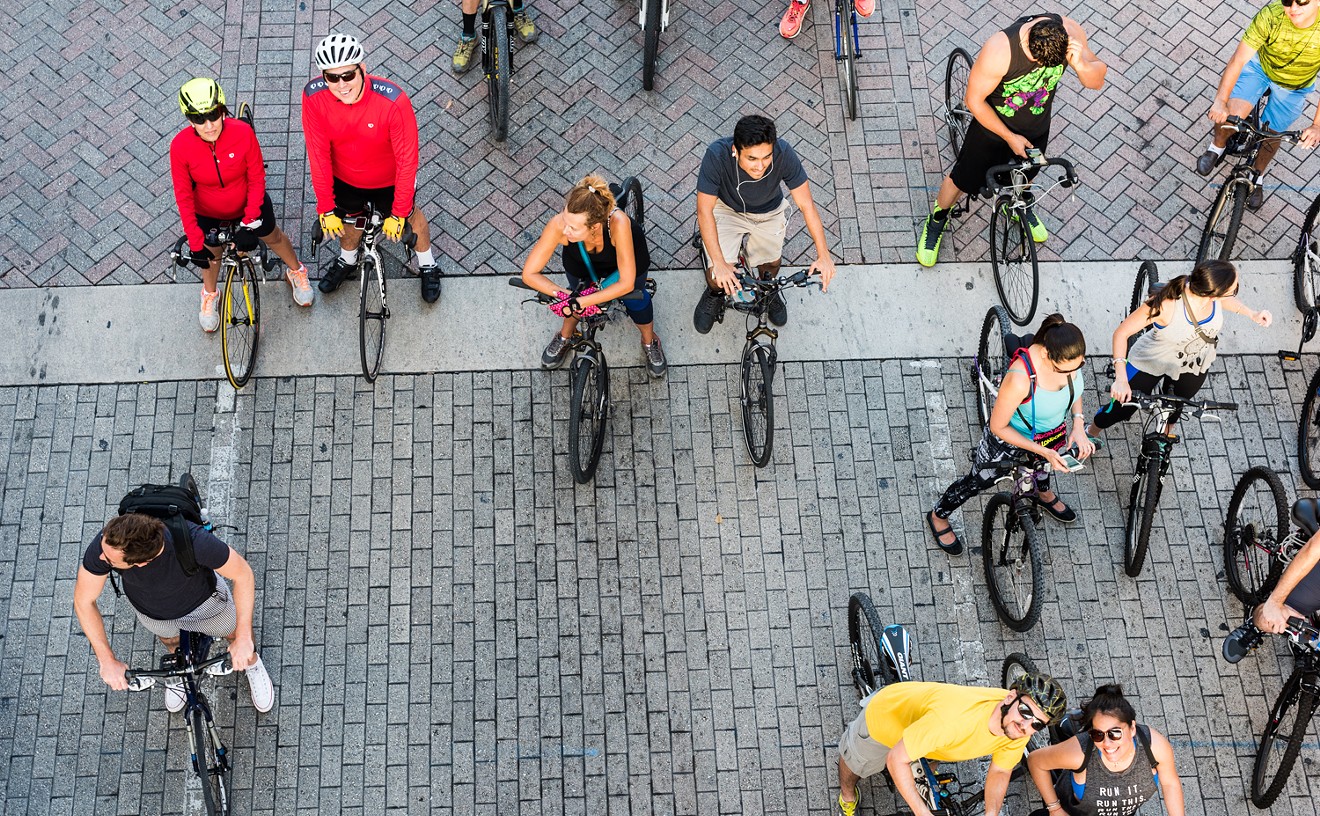When hiking through a forest, some people are wary of wildlife. Others look out for poisonous plants or unique trees. But artist Matthew Ronay searches for nature's edible fungus: the mushroom.
"It's really a Zen practice— you're not thinking about the past or future," he says. "It's about the pleasure of finding something strange."
Ronay appreciates the strange. It's characteristic of his latest
"One of the goals is to create sculptures that are not so much made by a person but grown."
tweet this
The works were inspired by deep-sea creatures, mushrooms, microscopic science, botany, and biology. Life processes such as mitosis, fertilization, birth, death, and cancer mutation are all on display in Ronay's buoyantly colorful collection. For every amazing and positive element, there's an equally destructive, frightening one. There is beauty, mystery, and decrepitude. The pieces, which are all made of wood, fill the window-lined Patricia Papper Project Gallery, adjacent to the museum's entrance.
"My inspiration [in] science is probably due in large part to my misreading of it," Ronay says. "I use science or biology to kind of see and back up other inclinations that I might have. [For instance,] when two people come together erotically, in that moment of two things unifying, the two parts kind of die and make one part."
Ronay's work has always been fueled by his surroundings. At 13 years old in his hometown of Louisville, Kentucky, he created punk-music zines with a good friend. It was the early '90s, and he was surrounded by a fertile Midwestern punk scene that gave way to indie groups Slint and Crain. With a Canon A1 camera in hand, he ventured into the streets and took photos of what he found.
"We were just annoying skate rats, skateboarding, and getting on people's nerves," he recalls, "but we had our own zines where we could review records and concerts and make fun of people."
Ronay then began training with Louisville artist Paul Fields. The late sculptor, known for organic marble pieces exhibited in Louisville parks, triggered Ronay's interest in the physical. Fields created from rock realistically smooth curves and ripples. He showed Ronay how to do it.
"It was difficult — I didn't continue to work with marble," Ronay says. But he had found his calling. "Intuitively, my body understands the physical space. I try to create forms by subtracting materials."
Now 40, Ronay has shifted his work from literal representations of the psychology of life and death to abstractions. His earlier sculptures included disembodied limbs and pancakes. These literal representations have found homes in the collections of New York's Museum of Modern Art and the Whitney Museum of American Art. His work has roots in that of surrealist masters such as Yves Tanguy.
His more recent shows have been influenced by biological processes. A 2014 exhibit at the Andrea Rosen Gallery in New York City featured saturated gouaches representing the respiratory system. Though two-dimensional, the pieces felt alive. "When I was younger, it was more blatant and the work was more about sex and death," Ronay says. "As I've aged, the work has become more abstracted and more open-ended and personal."
Ronay's work is also based in pulsating color. Though he is color blind, his pieces are defined by this sensitivity. He communicates powerful emotions through color. "I can't take color for granted," he says. "I can't use the same language like a normal person might use. So for that reason, I look at color as a way of wonderment. What is it? Is it turquoise, or is it purple? It's hard for me to tell, so I spend a lot of time thinking of color."
His wife Bengü, who is a graphic designer, collaborates with Ronay to achieve the appropriate and intended color temperature. "I work with my wife on palettes, and we discuss how I can tell the story I want. If I want something to feel alive, like a plant, we go through possibilities to think of how to do that."
Ronay began working on When Two Are in One while on a site visit in August. He drew his visions as "large and autonomous of the outdoor space." From a slew of drawings, he finally chose the 11 pieces on display at PAMM. Despite a squishy sensibility, each piece is made of varying combinations of basswood, plastic, steel, dye, and gouache. One sculpture, whose working title takes its name from the Roman god of beginnings, Janus, stands at four feet tall, dripping soft-pink pellets and oozing a yellow membrane.
Two summers ago, Ronay was on an artist's retreat in Heiligenberg, Germany, working on gouaches. The lush forest was a welcome escape from his Williamsburg, Brooklyn home. For a month and a half, he would meditate, hike, and forage for mushrooms daily.
"It really recharged my soul. One of the goals or qualities that I seek the most is to create sculptures that are not so much made by a person but grown," he says. "When you look at a tree and see hundreds of thousands of leaves, [you know] it's such an impossibility to create that with your hands... it grew itself."
When he's not foraging or working in his Brooklyn studio six days a week, Ronay plays in the electronic art band Lobotomaxxx. An early iteration of the band performed at Vizcaya during Art Basel 2007. The bandmates dress up in colorful space-age costumes, make noise, dance, and perform onstage. "It's punk, industrial, more like absurdist modern dance and speaking in tones," he says. "It's very abstract."
This week, Ronay will be present at PAMM to talk about five individuals who have influenced his artistic practice. The talk will explore ideas in wavelengths, biology, maps, and mysticism.
When Two Are in One
Thursday, March 10, through January 15, 2017, at Pérez Art Museum Miami, 1103 Biscayne Blvd., Miami; 305-375-3000; visitpamm.org. Admission costs $16. Hours are 10 a.m. to 9 p.m. Thursday and 10 a.m. to 6 p.m. the rest of the week except Wednesday, when PAMM is closed.











